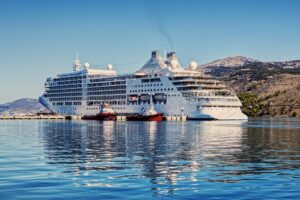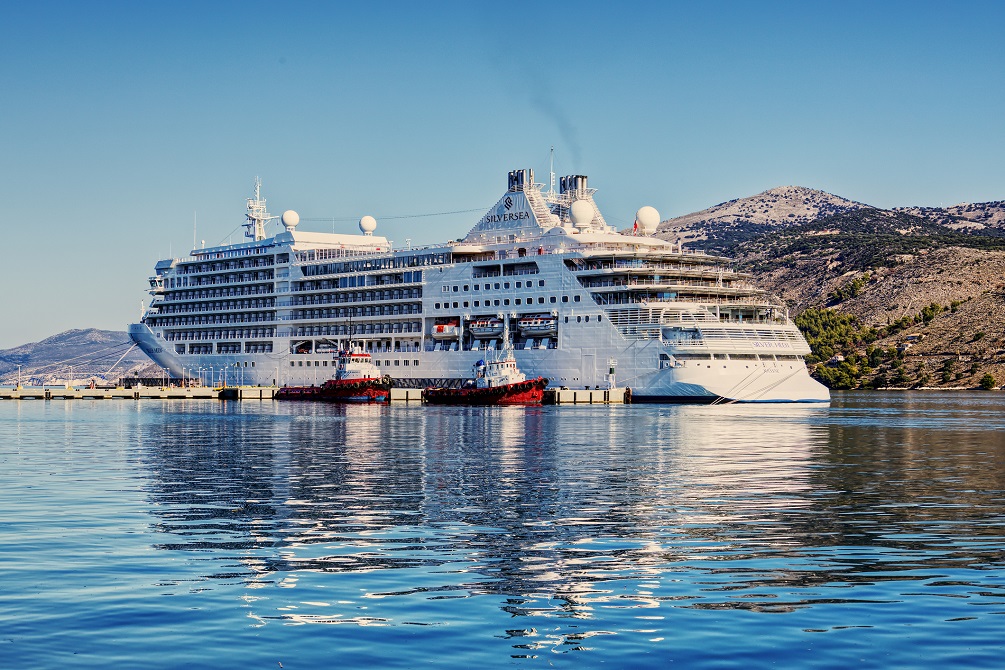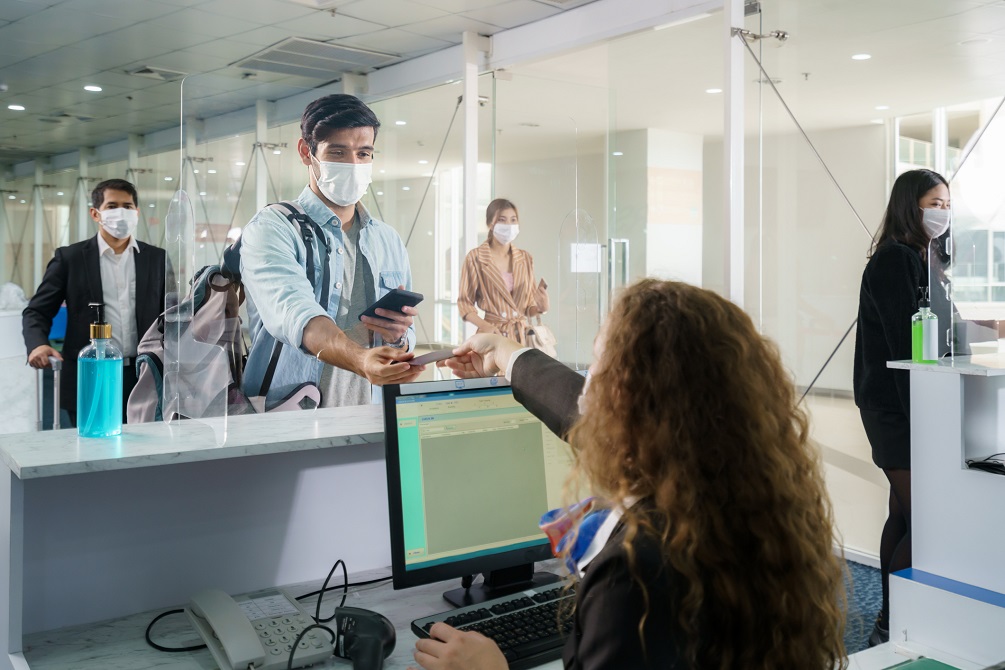Latvia
Explore the charm of Latvia through its mosaic forests, abundant lakes, and folkloric festivities.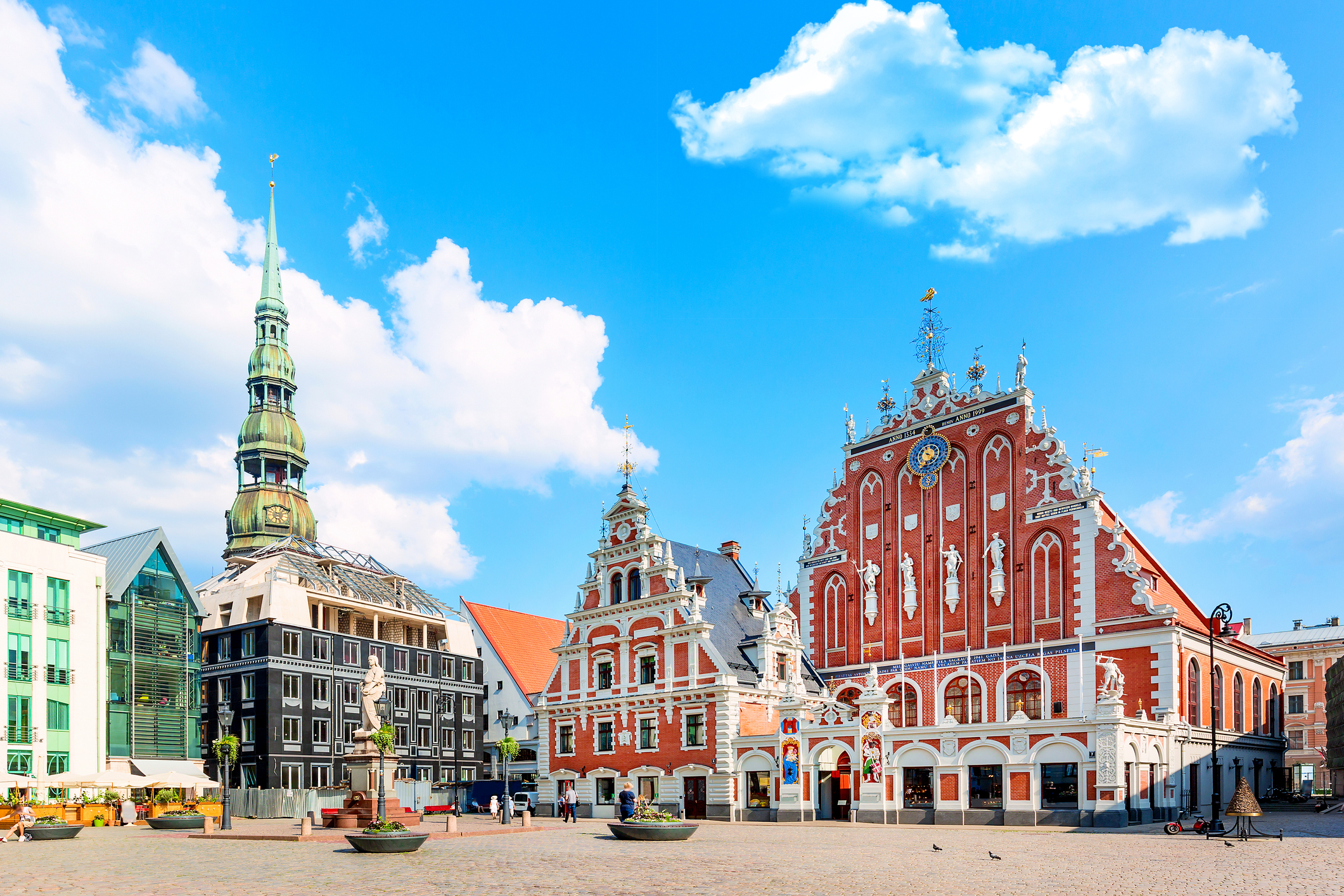
If you’re a nature lover, Latvia won’t disappoint. Woodlands, marshes, lakes, rivers, and the continent’s widest waterfall can be found in Latvia. The country’s low-lying terrain also features dazzling meadows, groves, gardens, and vast mires.
There’s a large population of bird species, like a black stork and the lesser-spotted eagle, which makes for a splendid birdwatching trip.
The country has a hearty cuisine that reflects the ancient hunting and gathering practices of Latvians. In most of Latvia’s forests, you can find edible berry bushes and wild mushrooms.
Latvia’s location next to the Baltic Sea provides the country with two climates: a coastal one in western Latvia and a continental one in eastern Latvia. High humidity, cloudy skies, and little sunshine characterize the weather in Latvia.
Over one-third of the population lives in Riga, the capital and largest city of Latvia. Although Ethnic Latvians are the largest group in the country, they make up less than half of the population in Riga.
The language spoken in Latvia is one of Europe’s most ancient. There’s also a variety of other languages spoken in the country by foreign residents, like Russian, German, and French.
Latvians are pagans at heart with a love for folklore, singing, and music.
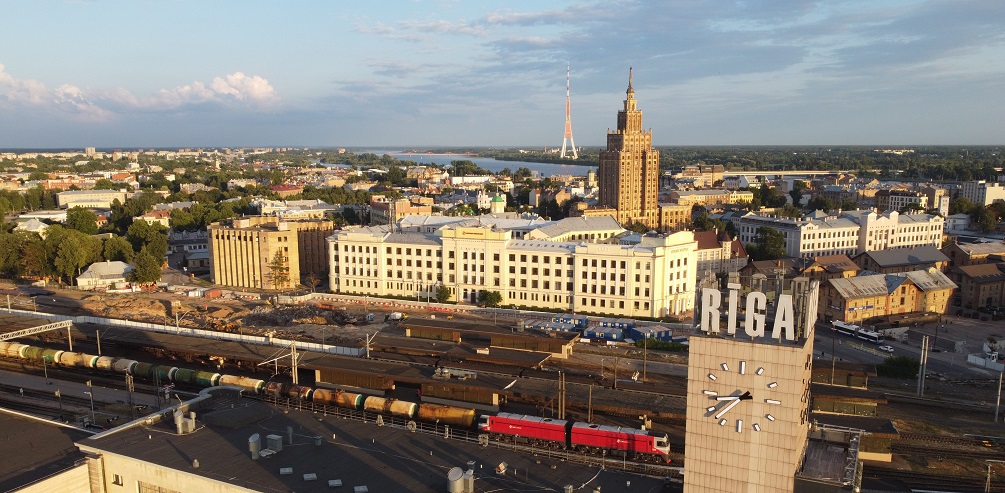


Tower Clock in sunset, at Riga, LatviaLatvia is in Northern Europe in the Baltic region. It’s bounded by Russia to the east, Lithuania to the south, Belarus to the southeast, and Estonia to the north. It shares a maritime border with Sweden to the west and with Estonia and Lithuania.
The country has a coastline of about 500 km (311 mi) along the Baltic Sea to the west. This coastline comprises dunes, white sand beaches, and marshes. There are also historic fishing villages where you can go on a fishing expedition with a local angler.
The Gulf of Riga, an inlet of the Baltic Sea, lies in Northwest Latvia.
Latvia is low-lying, with a majority of the land less than 100 m (330 ft.) above sea level. Undulating hills and flat lowlands characterize the landscape.
Over half of the hills in Latvia are forested, which creates a nature lover’s paradise filled with unique flora and fauna.
You can find a rich supply of wild strawberries, raspberries, blueberries, and loganberries amongst coniferous trees. If you’re keen on this adventure, a berry-picking season in Latvia runs from late June to late September.
Around 5 percent of the land contains marshes and mires. There are also plenty of berry bushes in these areas.
Many rivers flow through Latvia into the Baltic Sea. The longest inland river is the Gauja and the longest river running through the country is the Daugava.
There are also over 2,000 lakes in Latvia. Most are in Latgale in Eastern Latvia, a province dubbed as ‘the land of Blue Lakes’.
The inland waters are ideal for fishing and swimming, and the rivers are great for water sports like canoeing and rafting.
Latvia is home to the widest waterfall in Europe: the Ventas Rumba in Kuldīga. For the unmissable sight of fish jumping up the rapids as they head for spawning sites, visit the waterfall in spring.
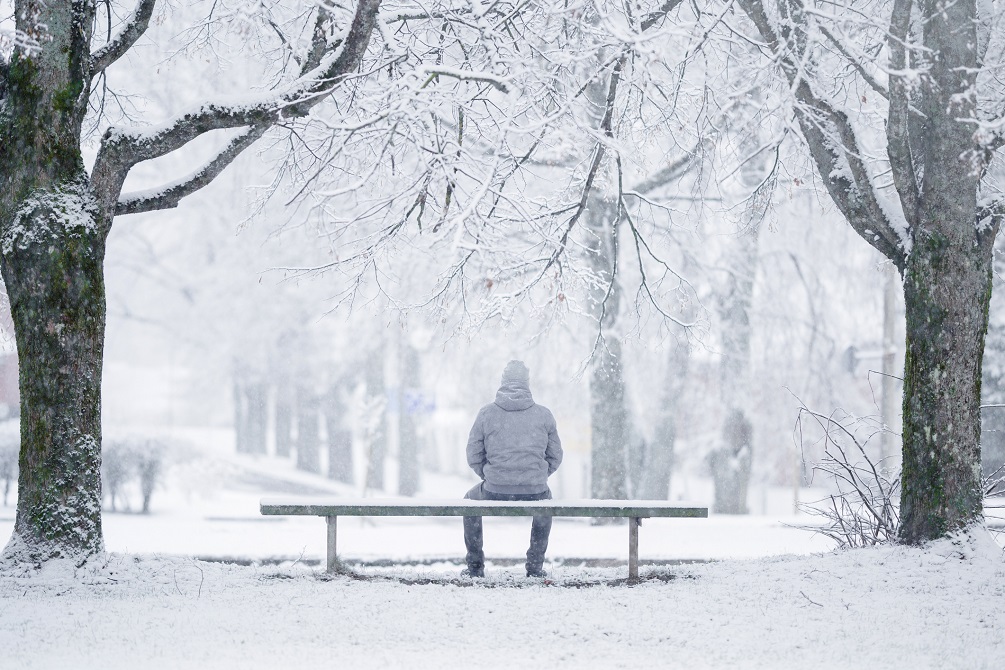


Latvia’s position beside the Baltic Sea and the south-westerly winds coming from the Atlantic have a significant influence over the country’s climate.
The western coast of the Courland Peninsula, a historical and cultural zone in the province of Courland, has a coastal climate. Summers are cool and rainy, while winters are mild.
The eastern parts of Latvia have a continental climate, with warmer summers and colder winters.
There are four pronounced seasons in the country. Winters run from Mid-December to Mid-March and summers last from June until August.
Summer in Latvia is pleasant, with warm and sunny conditions. The average temperature in June is around 17 °C (roughly 60 °F) and 19 °C (66 °F) for the entire season. The temperature can reach as high as 35 °C (95 °F).
Latvia has almost 20 hours of daylight in midsummer.
Winters gradually creep in with severe cold spells and temperatures as low as about −30 °C (−22 °F). Short days, heavy snowfall, and bright sunshine characterize the season.
Spring and autumn have milder weather compared to the other seasons.
The average rainfall in the lowlands usually exceeds 20 inches (around 500 mm), while in the highlands it may approach or exceed 30 inches (around 760 mm).
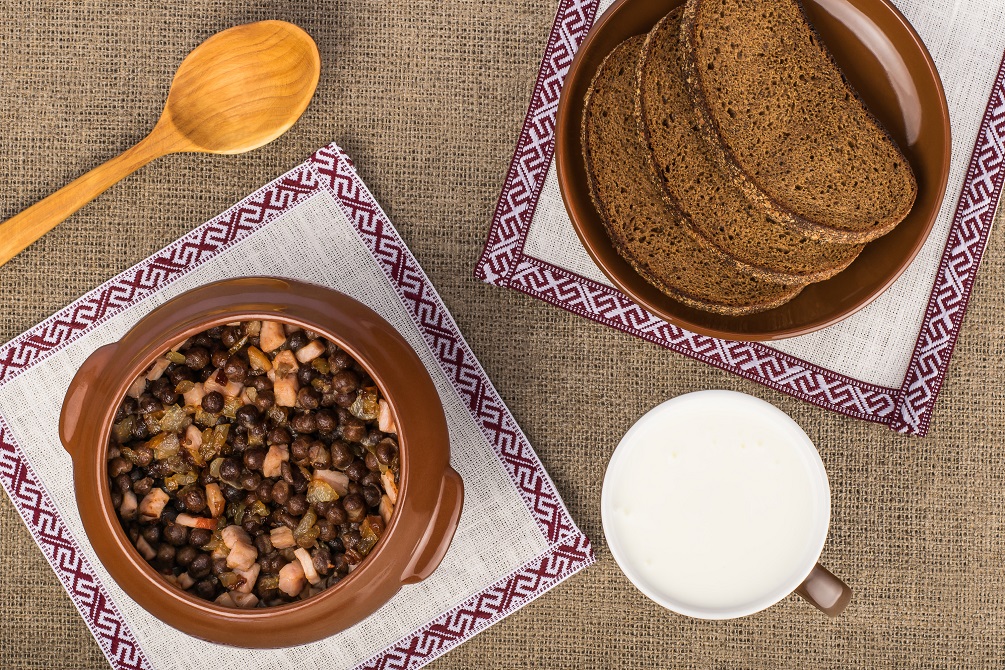


From the royal catfish and wild mushrooms to sweet strawberries and tart cherries, Latvian cuisine offers a culinary adventure like no other.
Latvia’s neighbours have influenced the local cuisine and the Latvians historical practice of foraging is still evident in some meals.
They derive most meal staples from their environment, like game, berries and mushrooms, which are seasonal.
Most dishes comprise meat and they’re packed with fats and calories. They use few spices as flavouring but that doesn’t mean their meals lack flavour that can excite the pallet.
Fish is integral to Latvian cuisine. A common dish in the country is smoked or salted herring.
Latvians often eat dairy products like cottage cheese and rūgušpiens (curdled milk), including ķimeņu siers (caraway cheese), wheat, barley, onions, eggs, and pork.
The most popular bread is Rye, while Latvians consider potatoes ‘the second bread’.
Grey peas with bacon is a staple dish in Latvia. And a traditional dish is baked pork ribs served with sautéed sauerkraut and boiled potatoes.
Other dishes you must try are speķa pīrāgi (Latvian bacon rolls), pelmeņi (dumplings stuffed with ground meat, onion, garlic, and red chili flakes), and rasol (a salad made from various vegetables and meats and mayonnaise).
Some favoured desserts are berry pies and tarts served with sour cream.
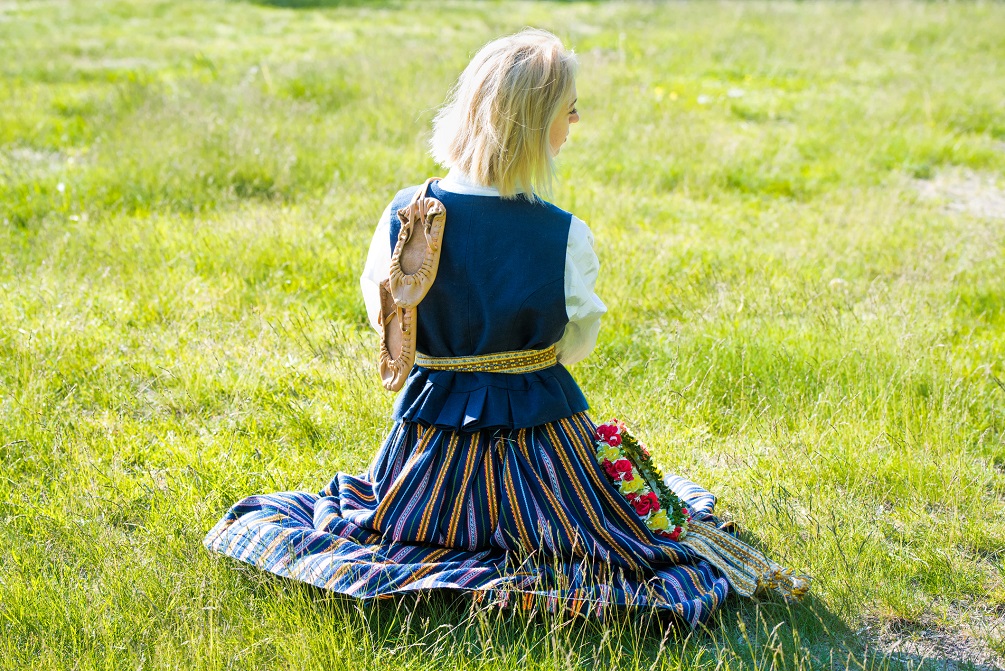


The time of year you’re visiting Latvia can give you an idea of what to pack for your trip.
Summer dictates light, breathable clothing made from natural fabrics.
Since summer is the rainy season, you should pack a waterproof jacket and shoes that the rain won’t ruin.
You should also bring along a light jacket or pashmina for cool evenings and gloomy days.
For a winter vacation in Latvia, it’s best to have a thick coat, sweaters, gloves or mittens, a hat, and insulated shoes.
If you’re traveling to Latvia in early autumn, light clothing is ideal, but you will need to double up on warm layers as the season stretches on. And in spring the weather can be unpredictable, so bring along garments you can layer.



The euro (EUR) is the local tender in Latvia. One euro is divided into 100 cents.
Banknotes come in denominations of 5, 10, 20, 50, 100, 200, and 500. However, the 200 and 500 EUR notes are rarely used or accepted. You’ll also find 1 and 2 euro coins. Cents come in denominations of 1, 2, 5, 10, 20, and 50 coins.
Most restaurants, supermarkets, hotels, and gas stations accept credit cards. There are also several accessible ATMs in Latvia.
Latvia is not entirely a cashless country. When traveling beyond the cities to the countryside, carry some cash. ATMs are harder to find outside of urban centers.



Latvian is the official language of the country. It’s rooted in Sanskrit and the Indo-European language family, sharing a bond with Lithuanian.
Latvian vocabulary comprises some words from other languages, such as German, Swedish, Russian, and English.
There are three dialects of Latvian spoken in the country: Riga, Kurzeme and Latgalian. There are subtle differences in pronunciation and vocabulary between these dialects.
Riga is the standard dialect of Latvian, and Latgalian is sometimes considered a separate language. Latgalian is spoken in the province of Latgale in the eastern part of Latvia.
One of the most common minority languages is Russian. It’s spoken by nearly one-third of the population.
Although English is the primary language for business and tourism in the country, learning some Latvian words and phrases before you travel is not a bad idea.
Here are some basic Latvian terms and sayings to get you started:
- Good morning – Labrīt
- Good afternoon – Labdien
- Hello – Sveiki
- Good evening – Labvakar
- Good night – Ar labu nakti
- Bye (informal) – Atā
- Goodbye (formal) – Uz redzēšanos
- No – Nē
- Yes – Jā
- Thank you – Paldies
- You’re welcome – Lūdzu
- Do you speak English? – Vai jūs runājat angliski?
- How much is it? – Cik tas maksā, lūdzu?
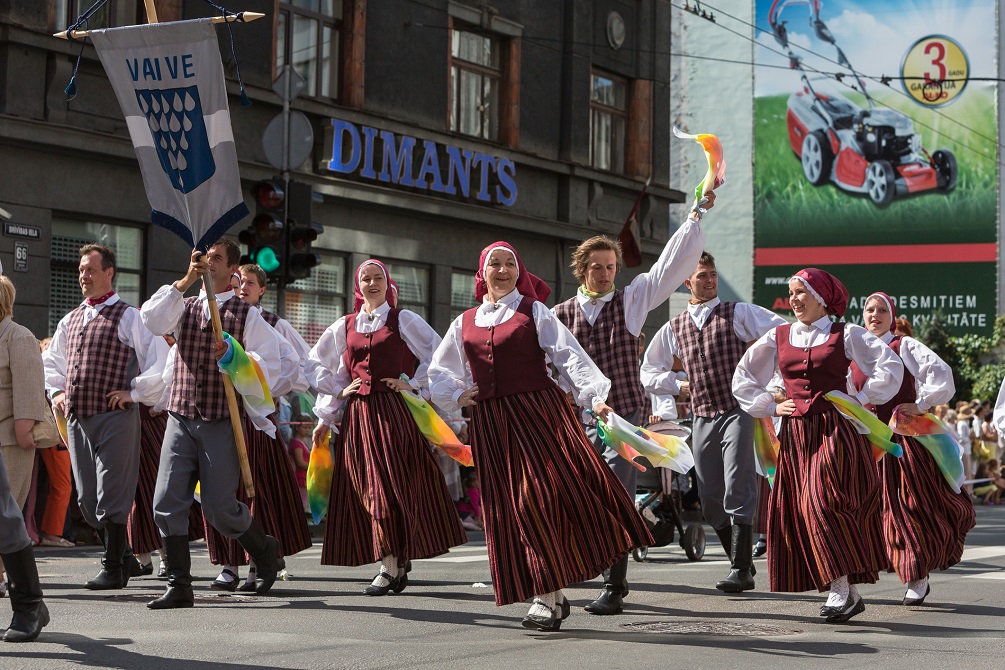


Despite the influences of neighboring countries, Latvians have built an identity that reflects their paganism at heart.
They continue to observe the traditions of their ancestors to this day, with Latvian folklore popular during Summer Solstice, or ‘Jāņi’. The largest festival in the country is the Latvian Song and Dance Festival. The celebration is integral to Latvian culture and social life.
Latvian culture is depicted in crafts, handiwork, music, and paintings.
Latvia is home to the art nouveau mastermind, Mikhail Eisenstein, and one founder of modern cinema, Sergei Eisenstein, who was a film director.
Singing is also a large part of Latvian culture. Some notable Latvian opera singers are Inese Galante and Elīna Garanča. Riga and Sigulda are the best cities to enjoy music and performance art in Latvia.
Ethnic Latvians make up most of the population, with Daugavpils and Rzekne having the largest ethnic Latvian numbers. In the capital city, Riga, ethnic Latvians account for less than half of the population.
Russians are the largest minority group, comprising close to 26% of the population. Smaller groups include Belarusians, Ukrainians, Poles, and Lithuanians.
Ice hockey is Latvia’s national and most popular sport. Several Latvians play in the National Hockey League (NHL) and the Kontinental Hockey League (KHL). Basketball is the second most popular sport in Latvia.
About 80% of the population is Christian. The primary religious groups are Lutheran, Roman Catholic, and Eastern Orthodox. Nonreligious people make up about a quarter of the population.
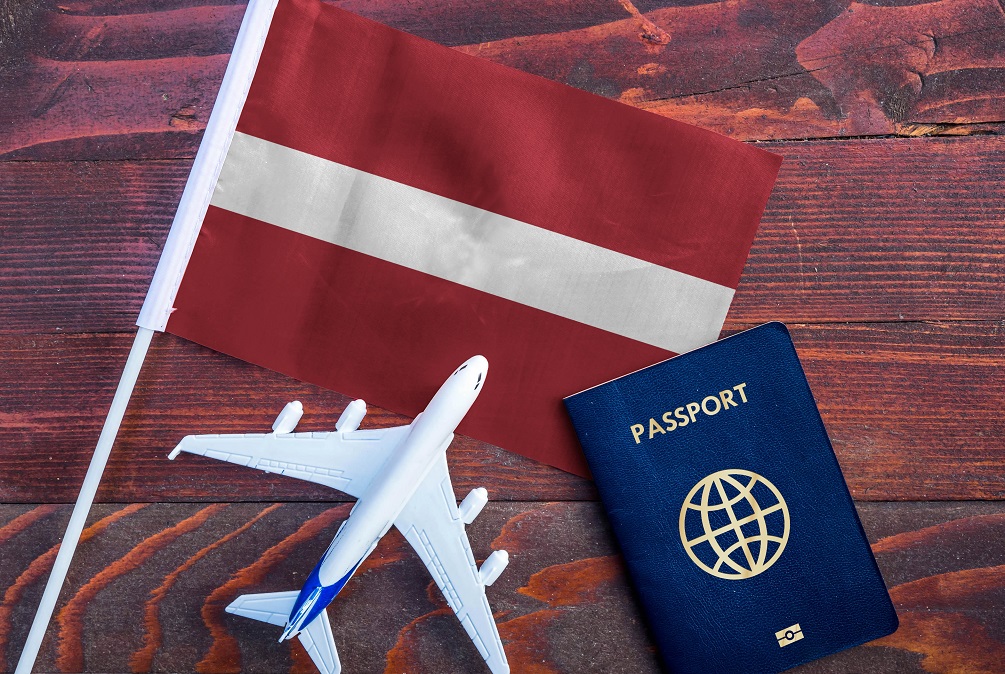


British citizens can enter Latvia without a visa and remain in the country for up to 90 days in any 6-month period.
If you travel to Latvia from another Schengen country, the days you spent there will count towards your 90 days. So ensure you don’t exceed the 90 days and plan the rest of your trip with this in mind.
To stay longer in Latvia, you’ll need to meet the Latvian government’s entry requirements. The Latvian embassy can help you find out what type of visa you need.
You may need to provide proof of an onward or return ticket at Latvian border control. In addition, you may have to prove that you have sufficient funds for your stay.
Your passport should not be older than 10 years. It should also be valid for at least 3 months after the day you intend to depart from Latvia.
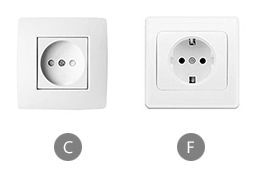


The power plugs and sockets in Latvia are Type F (round with two circular pins and two earth clips). This type of plug is also compatible with Type C (flat with two round pins) and Type E (round with two round pins and an earth rod).
Sockets supply a standard voltage of 230 V and a standard frequency of 50 Hz.
Ensure you bring along a transformer for devices and appliances with a lower voltage and a universal adapter with surge protection.



If you’re a nature lover, Latvia won’t disappoint. Woodlands, marshes, lakes, rivers, and the continent’s widest waterfall can be found in Latvia. The country’s low-lying terrain also features dazzling meadows, groves, gardens, and vast mires.
There’s a large population of bird species, like a black stork and the lesser-spotted eagle, which makes for a splendid birdwatching trip.
The country has a hearty cuisine that reflects the ancient hunting and gathering practices of Latvians. In most of Latvia’s forests, you can find edible berry bushes and wild mushrooms.
Latvia’s location next to the Baltic Sea provides the country with two climates: a coastal one in western Latvia and a continental one in eastern Latvia. High humidity, cloudy skies, and little sunshine characterize the weather in Latvia.
Over one-third of the population lives in Riga, the capital and largest city of Latvia. Although Ethnic Latvians are the largest group in the country, they make up less than half of the population in Riga.
The language spoken in Latvia is one of Europe’s most ancient. There’s also a variety of other languages spoken in the country by foreign residents, like Russian, German, and French.
Latvians are pagans at heart with a love for folklore, singing, and music.



Tower Clock in sunset, at Riga, LatviaLatvia is in Northern Europe in the Baltic region. It’s bounded by Russia to the east, Lithuania to the south, Belarus to the southeast, and Estonia to the north. It shares a maritime border with Sweden to the west and with Estonia and Lithuania.
The country has a coastline of about 500 km (311 mi) along the Baltic Sea to the west. This coastline comprises dunes, white sand beaches, and marshes. There are also historic fishing villages where you can go on a fishing expedition with a local angler.
The Gulf of Riga, an inlet of the Baltic Sea, lies in Northwest Latvia.
Latvia is low-lying, with a majority of the land less than 100 m (330 ft.) above sea level. Undulating hills and flat lowlands characterize the landscape.
Over half of the hills in Latvia are forested, which creates a nature lover’s paradise filled with unique flora and fauna.
You can find a rich supply of wild strawberries, raspberries, blueberries, and loganberries amongst coniferous trees. If you’re keen on this adventure, a berry-picking season in Latvia runs from late June to late September.
Around 5 percent of the land contains marshes and mires. There are also plenty of berry bushes in these areas.
Many rivers flow through Latvia into the Baltic Sea. The longest inland river is the Gauja and the longest river running through the country is the Daugava.
There are also over 2,000 lakes in Latvia. Most are in Latgale in Eastern Latvia, a province dubbed as ‘the land of Blue Lakes’.
The inland waters are ideal for fishing and swimming, and the rivers are great for water sports like canoeing and rafting.
Latvia is home to the widest waterfall in Europe: the Ventas Rumba in Kuldīga. For the unmissable sight of fish jumping up the rapids as they head for spawning sites, visit the waterfall in spring.



Latvia’s position beside the Baltic Sea and the south-westerly winds coming from the Atlantic have a significant influence over the country’s climate.
The western coast of the Courland Peninsula, a historical and cultural zone in the province of Courland, has a coastal climate. Summers are cool and rainy, while winters are mild.
The eastern parts of Latvia have a continental climate, with warmer summers and colder winters.
There are four pronounced seasons in the country. Winters run from Mid-December to Mid-March and summers last from June until August.
Summer in Latvia is pleasant, with warm and sunny conditions. The average temperature in June is around 17 °C (roughly 60 °F) and 19 °C (66 °F) for the entire season. The temperature can reach as high as 35 °C (95 °F).
Latvia has almost 20 hours of daylight in midsummer.
Winters gradually creep in with severe cold spells and temperatures as low as about −30 °C (−22 °F). Short days, heavy snowfall, and bright sunshine characterize the season.
Spring and autumn have milder weather compared to the other seasons.
The average rainfall in the lowlands usually exceeds 20 inches (around 500 mm), while in the highlands it may approach or exceed 30 inches (around 760 mm).



From the royal catfish and wild mushrooms to sweet strawberries and tart cherries, Latvian cuisine offers a culinary adventure like no other.
Latvia’s neighbours have influenced the local cuisine and the Latvians historical practice of foraging is still evident in some meals.
They derive most meal staples from their environment, like game, berries and mushrooms, which are seasonal.
Most dishes comprise meat and they’re packed with fats and calories. They use few spices as flavouring but that doesn’t mean their meals lack flavour that can excite the pallet.
Fish is integral to Latvian cuisine. A common dish in the country is smoked or salted herring.
Latvians often eat dairy products like cottage cheese and rūgušpiens (curdled milk), including ķimeņu siers (caraway cheese), wheat, barley, onions, eggs, and pork.
The most popular bread is Rye, while Latvians consider potatoes ‘the second bread’.
Grey peas with bacon is a staple dish in Latvia. And a traditional dish is baked pork ribs served with sautéed sauerkraut and boiled potatoes.
Other dishes you must try are speķa pīrāgi (Latvian bacon rolls), pelmeņi (dumplings stuffed with ground meat, onion, garlic, and red chili flakes), and rasol (a salad made from various vegetables and meats and mayonnaise).
Some favoured desserts are berry pies and tarts served with sour cream.



The time of year you’re visiting Latvia can give you an idea of what to pack for your trip.
Summer dictates light, breathable clothing made from natural fabrics.
Since summer is the rainy season, you should pack a waterproof jacket and shoes that the rain won’t ruin.
You should also bring along a light jacket or pashmina for cool evenings and gloomy days.
For a winter vacation in Latvia, it’s best to have a thick coat, sweaters, gloves or mittens, a hat, and insulated shoes.
If you’re traveling to Latvia in early autumn, light clothing is ideal, but you will need to double up on warm layers as the season stretches on. And in spring the weather can be unpredictable, so bring along garments you can layer.



The euro (EUR) is the local tender in Latvia. One euro is divided into 100 cents.
Banknotes come in denominations of 5, 10, 20, 50, 100, 200, and 500. However, the 200 and 500 EUR notes are rarely used or accepted. You’ll also find 1 and 2 euro coins. Cents come in denominations of 1, 2, 5, 10, 20, and 50 coins.
Most restaurants, supermarkets, hotels, and gas stations accept credit cards. There are also several accessible ATMs in Latvia.
Latvia is not entirely a cashless country. When traveling beyond the cities to the countryside, carry some cash. ATMs are harder to find outside of urban centers.



Latvian is the official language of the country. It’s rooted in Sanskrit and the Indo-European language family, sharing a bond with Lithuanian.
Latvian vocabulary comprises some words from other languages, such as German, Swedish, Russian, and English.
There are three dialects of Latvian spoken in the country: Riga, Kurzeme and Latgalian. There are subtle differences in pronunciation and vocabulary between these dialects.
Riga is the standard dialect of Latvian, and Latgalian is sometimes considered a separate language. Latgalian is spoken in the province of Latgale in the eastern part of Latvia.
One of the most common minority languages is Russian. It’s spoken by nearly one-third of the population.
Although English is the primary language for business and tourism in the country, learning some Latvian words and phrases before you travel is not a bad idea.
Here are some basic Latvian terms and sayings to get you started:
- Good morning – Labrīt
- Good afternoon – Labdien
- Hello – Sveiki
- Good evening – Labvakar
- Good night – Ar labu nakti
- Bye (informal) – Atā
- Goodbye (formal) – Uz redzēšanos
- No – Nē
- Yes – Jā
- Thank you – Paldies
- You’re welcome – Lūdzu
- Do you speak English? – Vai jūs runājat angliski?
- How much is it? – Cik tas maksā, lūdzu?



Despite the influences of neighboring countries, Latvians have built an identity that reflects their paganism at heart.
They continue to observe the traditions of their ancestors to this day, with Latvian folklore popular during Summer Solstice, or ‘Jāņi’. The largest festival in the country is the Latvian Song and Dance Festival. The celebration is integral to Latvian culture and social life.
Latvian culture is depicted in crafts, handiwork, music, and paintings.
Latvia is home to the art nouveau mastermind, Mikhail Eisenstein, and one founder of modern cinema, Sergei Eisenstein, who was a film director.
Singing is also a large part of Latvian culture. Some notable Latvian opera singers are Inese Galante and Elīna Garanča. Riga and Sigulda are the best cities to enjoy music and performance art in Latvia.
Ethnic Latvians make up most of the population, with Daugavpils and Rzekne having the largest ethnic Latvian numbers. In the capital city, Riga, ethnic Latvians account for less than half of the population.
Russians are the largest minority group, comprising close to 26% of the population. Smaller groups include Belarusians, Ukrainians, Poles, and Lithuanians.
Ice hockey is Latvia’s national and most popular sport. Several Latvians play in the National Hockey League (NHL) and the Kontinental Hockey League (KHL). Basketball is the second most popular sport in Latvia.
About 80% of the population is Christian. The primary religious groups are Lutheran, Roman Catholic, and Eastern Orthodox. Nonreligious people make up about a quarter of the population.



British citizens can enter Latvia without a visa and remain in the country for up to 90 days in any 6-month period.
If you travel to Latvia from another Schengen country, the days you spent there will count towards your 90 days. So ensure you don’t exceed the 90 days and plan the rest of your trip with this in mind.
To stay longer in Latvia, you’ll need to meet the Latvian government’s entry requirements. The Latvian embassy can help you find out what type of visa you need.
You may need to provide proof of an onward or return ticket at Latvian border control. In addition, you may have to prove that you have sufficient funds for your stay.
Your passport should not be older than 10 years. It should also be valid for at least 3 months after the day you intend to depart from Latvia.



The power plugs and sockets in Latvia are Type F (round with two circular pins and two earth clips). This type of plug is also compatible with Type C (flat with two round pins) and Type E (round with two round pins and an earth rod).
Sockets supply a standard voltage of 230 V and a standard frequency of 50 Hz.
Ensure you bring along a transformer for devices and appliances with a lower voltage and a universal adapter with surge protection.
Travel related news, information and inspirational articles and videos for travellers booking flights or holidays to Latvia. Ask questions about travel in Latvia and get answers from Latvia experts
NEWS
Inspiration, Information and Travel Guides
MEET THE Latvia EXPERTS
If you are looking to book a holiday to Latvia or needs some help and advice planning travel to Latvia then contact one of the UK based independent travel agents that specialise in Latvia itineraries.
FEATURED VIDEOS
Your Travel Questions Answered
Ask any travel related question and get an answer from one of our experts that will provide you with an answer from their personal experience
There is no question for this category.

